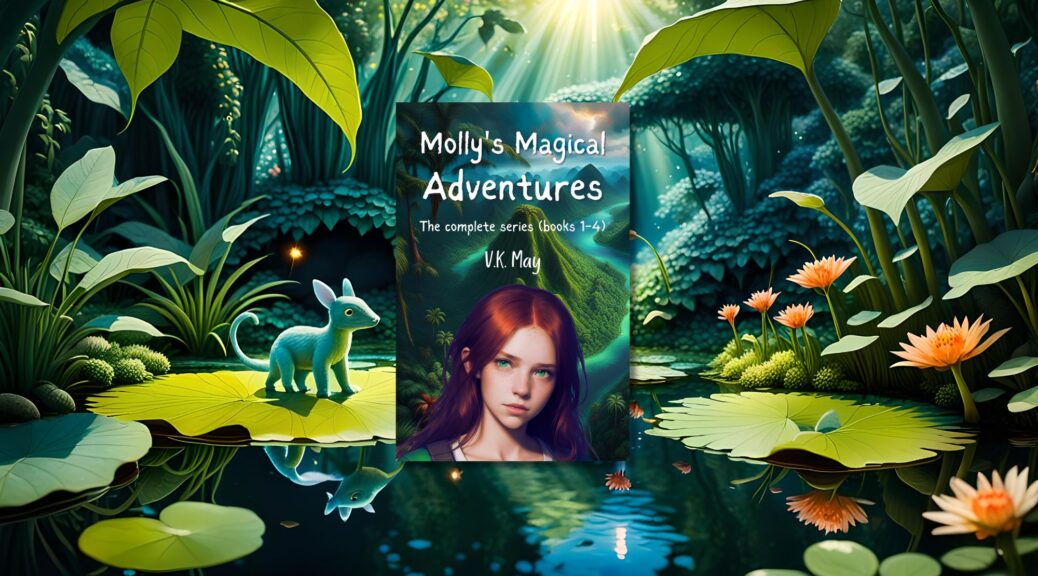Embracing Eco-Fiction and Eco-Magic: A Pathway to Understanding and Action
In a world grappling with the profound impacts of climate change and environmental degradation, literature offers a unique and powerful avenue for understanding and engaging with these pressing issues. While eco-fiction and eco-magic are often celebrated as enriching genres for children, they hold immense value for adults as well. These genres blend compelling narratives with critical environmental themes, fostering a deeper connection to our natural world and inspiring meaningful action. Here’s why adults should embrace eco-fiction and eco-magic stories.
Bridging the Gap Between Knowledge and Action
Understanding the complexities of environmental issues can be daunting. Scientific reports, data-driven articles, and technical jargon can sometimes alienate rather than engage. Eco-fiction and eco-magic cut through this barrier by presenting environmental themes in an accessible and emotionally resonant manner. By weaving ecological concerns into the fabric of their narratives, these genres make abstract concepts tangible and relatable. Consider Richard Powers’ Pulitzer Prize-winning novel, “The Overstory”. Through the interwoven lives of its characters and their relationships with trees, Powers crafts a compelling narrative that highlights the interconnectedness of all life forms and the urgent need for environmental stewardship. This novel doesn’t just inform; it transforms readers’ perceptions and encourages them to see the world through a more ecologically mindful lens.
Engaging the Imagination
Eco-magic harnesses the power of imagination to foster a sense of wonder and connection with the natural world. By infusing elements of magic and fantasy into ecological narratives, these stories can captivate readers and transport them to worlds where nature is both powerful and enchanting. Take, for instance, “The Bear and the Nightingale” by Katherine Arden. Set in the wilderness of medieval Russia, this novel blends folklore and magical realism to explore the relationship between humans and the natural world. Through its enchanting narrative, readers are drawn into a world where the respect and preservation of nature are paramount, subtly imparting valuable lessons about environmental stewardship.
Building Empathy and Awareness
One of the most profound impacts of literature is its ability to build empathy. Eco-fiction and eco-magic stories often centre around characters who face environmental challenges, allowing readers to walk in their shoes and experience their struggles and triumphs. This empathetic connection can lead to a greater awareness of environmental issues and a more personal commitment to addressing them. Barbara Kingsolver’s “Flight Behavior” is a poignant example. The novel follows a young woman in rural Tennessee who discovers a valley filled with monarch butterflies displaced by climate change. Through her journey, readers gain insight into the ripple effects of environmental disruption on communities and individuals. Kingsolver’s narrative fosters a deep sense of empathy for both the human and non-human characters affected by these changes.
Inspiring Action and Hope
Eco-fiction and eco-magic do more than highlight problems; they often inspire hope and action. By presenting stories of resilience, innovation, and collaboration, these genres can motivate readers to take steps towards environmental sustainability in their own lives. In “Parable of the Sower” by Octavia Butler, the protagonist’s journey through a dystopian future shaped by climate change and societal collapse offers a stark warning, but also a message of hope and resilience. The novel encourages readers to think critically about their own actions and the collective steps needed to build a sustainable future.
A Community of Conscious Readers
By embracing eco-fiction and eco-magic, adults join a growing community of readers who are not only passionate about literature but also committed to environmental advocacy. These genres offer a shared language and narrative framework for discussing and addressing ecological issues, fostering a sense of solidarity and collective purpose. “Climate Fiction”, an anthology edited by Megan Herbert and Michael E. Mann, brings together stories from diverse voices, each addressing climate change from different angles. This collection demonstrates the power of storytelling to unite readers and inspire a collective response to global challenges.
Bringing it all together
Written for children, Molly’s Magical Adventures is a series of highly imaginative stories that follow the plight of two kids: 10 year old Molly and 12 year old Michael. Both passionate about science and nature, their sense of logic is challenged when they encounter several strange and magical things in the middle of the jungle of Papua New Guinea. Nothing is as it seems which makes them determined to understand. Through their investigations, and their relationships with local people, they come to a deeper appreciation of the deep and complex connections between all living things. Through these experiences, they develop empathy and a fierce desire to help protect the natural environment against unnatural forces. The climax of the series occurs when they take on the evil ghost man, the genius master mind of a company that is exploiting the region’s natural resources. Molly and Michael’s actions are strategic, yet swift and effective, resulting in the public exposure of the exploitation of the natural world. I additional to its magical and ecological themes, the series is also a testament to the power of friendship and resilience.
Conclusion
Eco-fiction and eco-magic are far more than entertainment; they are vital tools for understanding, empathizing with, and addressing the environmental crises we face. By engaging with these genres, adults can deepen their ecological awareness, build empathy, and find inspiration for action. In a time when the need for environmental stewardship is more urgent than ever, eco-fiction and eco-magic offer a pathway to not just envisioning a better world, but actively participating in its creation. So, pick up a novel that blends the wonders of the natural world with the power of imagination. Let its story guide you towards a deeper understanding and a renewed commitment to the planet we all share. 🌍📚✨




